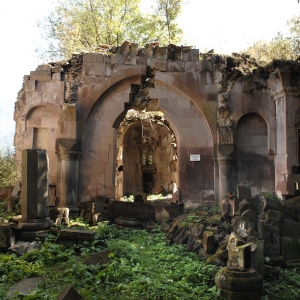
Dsegh
Dsegh village is one of the most popular in Lori region and is famous for being the birthplace of the the famous Armenian poet Hovhannes Tumanyan. The works of the poet are widely read, cited and taught at schools, some even call Hovhannes Tumanyan the “Armenian Pushkin” due to his popularity. His house has now become a museum located in the city-center of Dsegh.
The village itself is located on the right bank of the river Debed. It is one of the oldest populated areas, the mention of which comes from 7th century. The village has the traditional basilica church built by Mamikonyan Dukes in the 7th century. The church has been renovated in the 19th century. There is a well-preserved cemetery of 7-13th centuries, where the tombs of the Mamikonyan dynasty representatives may be found. Cemeteries in Armenia are usually famous for their beautiful gravestones – Khachqars (literally translated as “Cross stones”), which can very well be considered great works of art. Especially one of them – the “Siroun Khach” (literally translated as “Beautiful Cross”) located in Dsegh, has long been an object of admiration by both locals and visitors. Numerous other monuments are located on the territory – St Gregory monastery 12-13th century, with khachqars all around, a medieval bridge and 40 Mankants monastery remains (“40 children” monastery) 10-11th century.
The area around Dsegh has been indicated as an important Bird Area by Bird Life International. Here species such Caucasian Grouse, Eurasian Griffon vulture and Caspian Snowcock might be watched.


